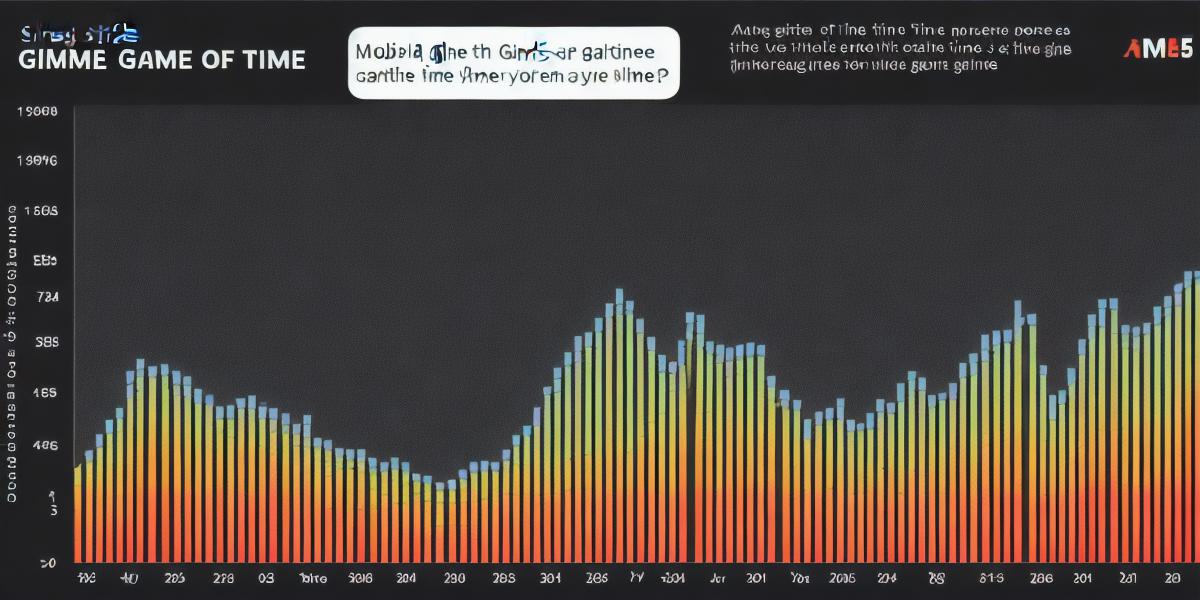Mobile games have taken the world by storm, with millions of downloads and active users across various platforms. As a mobile games developer, it is essential to understand the factors driving this popularity and how you can capitalize on these trends. In this text, we will explore some of the underlying causes of the popularity of mobile games.

1. Accessibility and Convenience
Mobile games provide unmatched accessibility and convenience, allowing users to play their favorite games anywhere and anytime. With smartphones becoming an integral part of our daily lives, it’s no surprise that mobile gaming has seen such significant growth. A study conducted by Newzoo in 2020 reported that mobile gaming accounted for approximately 45% of the total global gaming market share, with a projected revenue of $117 billion (Newzoo, 2020).

2. Variety and Diversity
Mobile games cater to an incredibly diverse range of genres, interests, and skill levels. From casual puzzle games to high-intensity action titles, there’s a mobile game for everyone. Moreover, with the continuous release of new games and updates, developers keep their audience engaged and coming back for more (Statista, 2021).
3. Social Interaction and Competition
Mobile games offer unique opportunities for social interaction and competition. Players can connect with friends and family through multiplayer modes, collaborative missions, or real-time messaging features. Furthermore, these games often include in-app purchase options, allowing users to showcase their achievements and compete with others for high scores (GamesIndustry.biz, 2021).
4. Innovation and Technology
Advancements in technology, such as Augmented Reality (AR), Virtual Reality (VR), and cloud gaming services, have brought about new experiences in mobile games. AR games like Pokemon Go and VR titles like Beat Saber offer immersive gaming experiences that are difficult to replicate on traditional platforms. Additionally, cloud gaming services like Google Stadia and NVIDIA GeForce Now enable users to access high-performance gaming experiences on their mobile devices (Statista, 2021).
5. Monetization Strategies
Mobile games employ various monetization strategies that cater to different user preferences. These strategies range from in-app purchases, subscriptions, and ads, allowing developers to generate revenue while providing value to their users. For instance, freemium models like Clash of Clans offer basic features for free but require players to purchase in-game currency or items for additional perks (App Annie, 2021).
In conclusion, the popularity of mobile games can be attributed to factors such as accessibility, variety, social interaction, innovation, and effective monetization strategies. As a mobile games developer, it’s essential to keep these trends in mind when designing, developing, and marketing your game to ensure success in this dynamic industry.
**References:**
App Annie. (2021). State of Mobile 2021: Games. Retrieved from https://www.appannie.com/en/reports/state-of-mobile-games-2021
GamesIndustry.biz. (2021). Social Features in Mobile Games. Retrieved from https://www.gamesindustry.biz/articles/2021-03-29-social-features-in-mobile-games
Newzoo. (2020). Global Game Market Report: Full Year 2020. Retrieved from https://newzoo.com/insights/trends/global-game-market-report-full-year-2020/
Statista. (2021). Mobile games market size worldwide in 2020 and 2025. Retrieved from https://www.statista.
